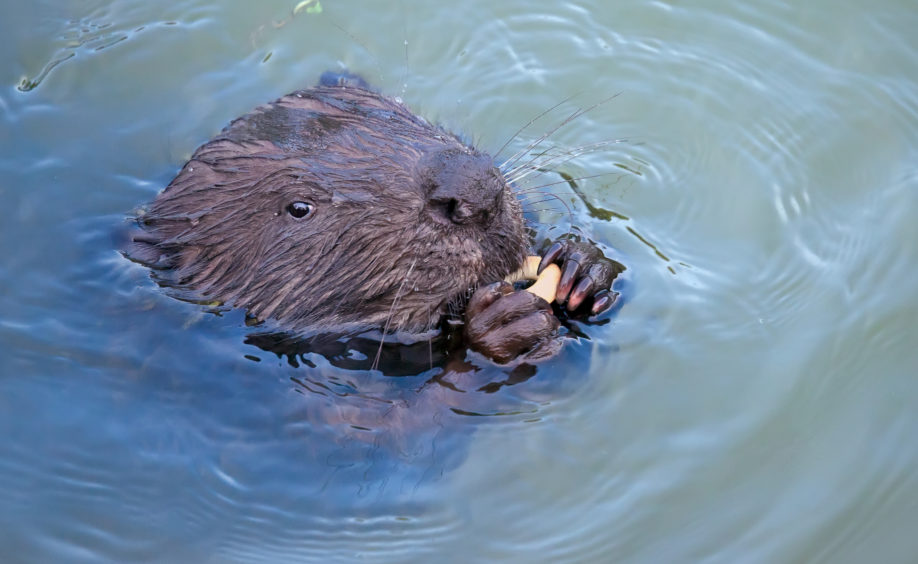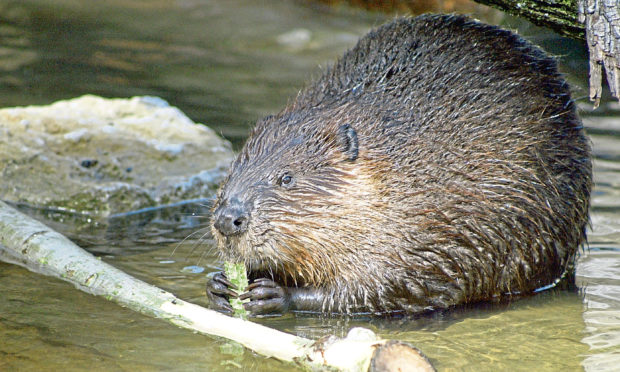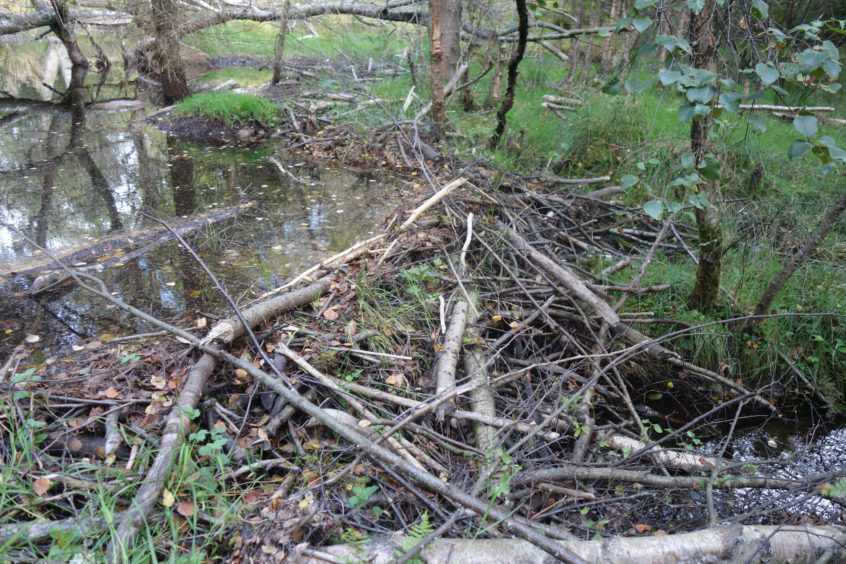A pond, but no ordinary one, for this little shimmering oasis deep within thick willow and alder carr near Dunkeld has been created by beavers.
In an incredible feat of engineering, the beavers have dammed a small trickling burn, placing gnawed branches carefully on top of one another, and then building it outwards, producing a formidable barrier. The intricate dam backs up the water, but a decent flow still spills out from its lower part, maintaining the progress of the burn.
I hunker down and peer into this dark, languid pool. Pond skaters glide across the surface and a whirligig beetle swirls around in crazy fashion. By a shallow margin, caddisfly larvae lie on the bottom, encased in their protective homes constructed from tiny pieces of pond detritus.
This pond is awash with nature, a haven for a multitude of invertebrates and water plants, all flourishing because of the industry of these beavers. Amphibians and water voles often colonise such pools, creating a whole new web of life.
The return of beavers to Scotland after centuries of extinction intrigues me like a burning passion.
There are many reasons for this fascination, but if I were to put my finger it, then it is because they are a symbol of the past, our natural heritage and of humankind’s proclivity to destroy it, but also of nature’s ability to bounce back if given the chance to do so.
It is not just for ecological reasons we should welcome beavers, for there are moral ones, too. Beavers are an integral part of the Scottish environment and it is their right to be here. They also have a right for us to protect them.
Beavers are spreading their range and have begun colonising my local river. As such, for the past few weeks I have been out at dusk hoping to catch a glimpse of one. On each visit, I scan the water repeatedly, my senses tuned to the slightest movement or change, a lone and hunched figure under the twilight sky. Sometimes the water swirls in an unusual way, the smallest quivering, and my interest is immediately aroused. But it always turns out to be the natural eddy of the current, or a moving trout below.
One evening from my vantage point, I watch the sun slowly fall through the sky until it slips below the rim of a hill. I love dusk and dawn in equal measure, mellow light, calming winds and gentle air, a time when nature envelopes every part of your body.
The heady aroma of the river fills my lungs, but once more, I see no beavers. I am undaunted, for that is often the way of things when watching wildlife. Besides, the softness of the gloaming and the whispering flow of the water had calmed my soul like a soothing tonic, and for that, I was truly grateful.

Recent research by Stirling University found that beavers have an important impact on biodiversity, with the number of plant and invertebrate species found in beaver-built ponds being much higher than in other wetlands in the same region.











